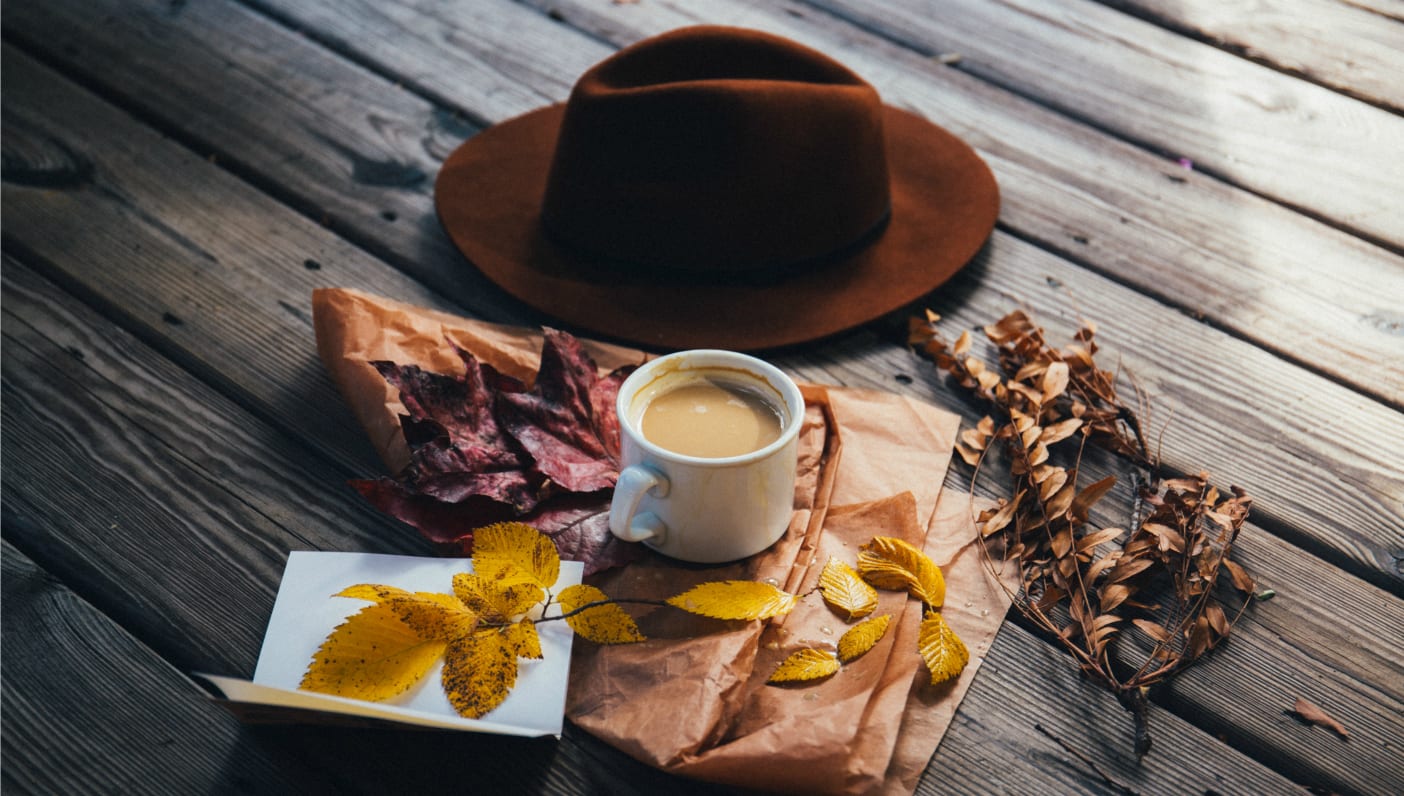
The leaves are changing colors, there’s a chill in the air and we’re ready for that extra layer… Fall has finally arrived.
While the new season brings with it an elevated feeling of lightness and creativity for some, others may experience the exact opposite effect. Cold feet, cold hands, dry skin, chapped lips, fatigue and racing thoughts are very common. In some cases, even depression.
These are all signs of aggravated Vata that tend to accumulate in the fall. If you’re a known Vata dosha, rest assured, this season does not have to be a miserable one. When balanced, Vata can portray those desired characteristics of increased creativity, lightness and enthusiasm. The practice of Ayurveda leaves it up to us to decide how we would like to feel and gives us the tips to stay balanced.
If you feel that your Vata is aggravated, try the following tips to help you find more balance this season:
Choose Warm Over Cold
Vata qualities are cold, dry, rough and constant movement. To counterbalance Vata, the key is to provide nourishing, grounding, warm food and environments. Cooked warm foods are a lot easier to digest and absorb. For added help, try adding warming Ayurvedic spices such as touches of turmeric, cumin, coriander, cinnamon, dried ginger, black pepper and saffron. With this slight variation, you’ll reap the benefits of added flavor, aroma and healing. Follow up any heavy meals with ginger or cinnamon tea.
Moist and Juicy is Better than Dry and Crunchy
Vata is easily aggravated by anything dry since it is naturally rough and dry. For balance, look for plenty of fluids such as juicy fruits, soups, stews and well cooked grain dishes. Sesame and olive oils are a great way to add nourishment and can be added to any root vegetable. Ghee is an excellent way to add flavor and stimulate digestion and strengthen your immune system. Soups, cooked fruit, warm cereal, and hot nourishing beverages such as nut milks or warm milk are excellent “comfort” foods and help pacify aggravated Vata. Avoid anything crunchy and crispy such as dried fruits, crackers and cold cereals.
Remember the Three S’s
Sweet, sour and salty are the three ayurvedic tastes that help balance Vata. It’s best to include more of these tastes in your daily diet. Grains, citrus fruits and salted toasted sunflower or pumpkin seeds make good snack choices. Root vegetables such as carrots, asparagus, tender leafy greens, beets, sweet potatoes, and summer squash (such as zucchini) are the best choices for the fall season. Vegetables can be combined with grains or mung beans for satisfying meals.
Soft Warm Touch
From October through February (Vata season) add warmth and softness into your life wherever you can. Pay attention to your clothing, your surroundings and even your relationships. Add soft rugs and blankets where you can and surround yourself with warm colors such as orange, red and yellow to lift your mood and help boost a positive outlook. Most importantly, stay warm. Most Vata people get cold very easily, slowing their circulation down and leading to a number of imbalances. Curling up next to a warm Kapha or Pitta person can always leave the heart warm, too!
Maintain a Regular Daily Ritual
One of the best things for keeping Vata in check is a regular schedule. A regular schedule or routine keeps the nervous system calm and balanced. When the nervous system is relaxed, our digestion improves, our mind is clear, and we feel calm and peaceful.
Try adding some of these tips to your routine this month and see if it makes a difference. Let us know in the comments below.
Not sure what your dosha is? Take our quiz!
—
 Joan’s grounded teaching style creates space for students to deepen their personal journey while aligning with teachings of true yogic traditions. Joan frequently shares her insight on the subject of health and wellness in national magazines and blogs, including Elephant Journal, Mind Body & Green, Yoga Journal, ORIGIN Magazine and Women’s Health. She currently has a thriving career as a Wanderlust Senior Teacher (E-RYT500) and leads yoga retreats, workshops, and teacher trainings all over the world, while maintaining a full yoga class schedule in Los Angeles. joanhyman.com
Joan’s grounded teaching style creates space for students to deepen their personal journey while aligning with teachings of true yogic traditions. Joan frequently shares her insight on the subject of health and wellness in national magazines and blogs, including Elephant Journal, Mind Body & Green, Yoga Journal, ORIGIN Magazine and Women’s Health. She currently has a thriving career as a Wanderlust Senior Teacher (E-RYT500) and leads yoga retreats, workshops, and teacher trainings all over the world, while maintaining a full yoga class schedule in Los Angeles. joanhyman.com